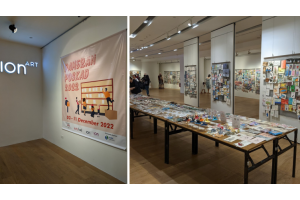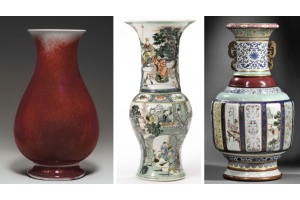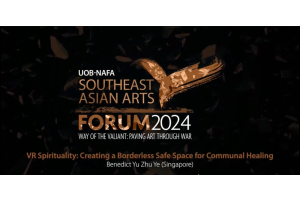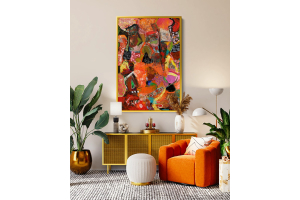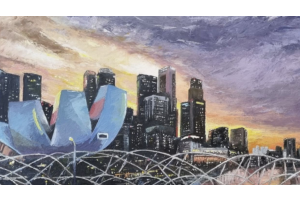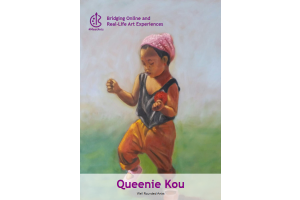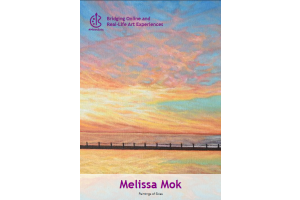Creating Artworks through Artificial Intelligence (AI)
-
May 21, 2023
Informational
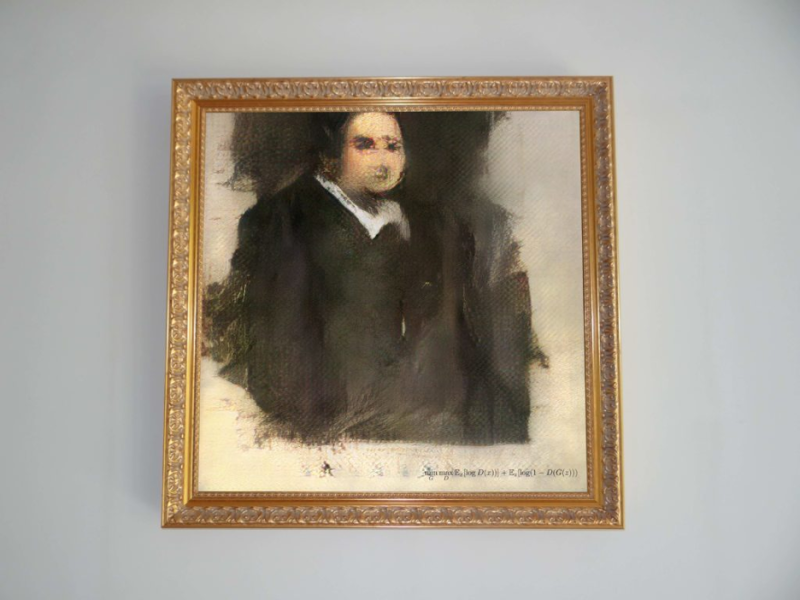
Written by: Steven Shannon
In 2018, AI generated artworks took the limelight when the Portrait of Edmond de Belamy was sold in a Christie’s auction for US$432,000. This raises an interesting question : can AI created artworks be considered art? Completely generated by artificial intelligent algorithms, the painting is the first ever AI artwork to be sold in an auction house. As the painting was auctioned, intense competition boiled over from those present in the house, those calling in, and those online until the price showed a 4,320 percent increase from its presale estimate of US$10,000.
This isn’t the first time AI art has been under the spotlight. In 2022, at the Colorado State Fair Fine Arts Competition, game designer Jason M. Allen takes home the trophy as his artwork “Théâtre D’opéra Spatial” wins first place for the emerging artist division: digital arts and digitally manipulated photography category. But as AI art becomes popular, it raises an interesting question: can AI generated artworks be considered art?
How is AI art generated?
AI art relies on machine learning algorithms and generative models to generate novel and often unpredictable results. These algorithms are trained on large, extensive datasets such as collections of existing paintings, photographs, drawings, and so on, and through this, the AI learns to identify patterns, styles, and visual elements that define the different genres.
There are three popular techniques used to generate art. One is called “Generative Adversarial Network,” GAN for short, and it uses two components: a generator and a discriminator. In this technique, the generator attempts to create a new artwork and the discriminator uses its large bank of artworks to evaluate the quality and originality of the generated piece. Iteratively, this technique produces increasingly refined artworks.

Faces generated by GAN where the rightmost column shows real photos used to train the system. Source: https://www.wired.com/gallery/where-the-ai-art-boom-came-from-and-where-its-going/
Another technique is called “Convolutional Neural Network,” CNN for short, and it finds patterns in the artworks from its database and generates an image from those patterns. The third technique is called “Neural Style Transfer,” NST for short, and it turns one input image into the style of another.
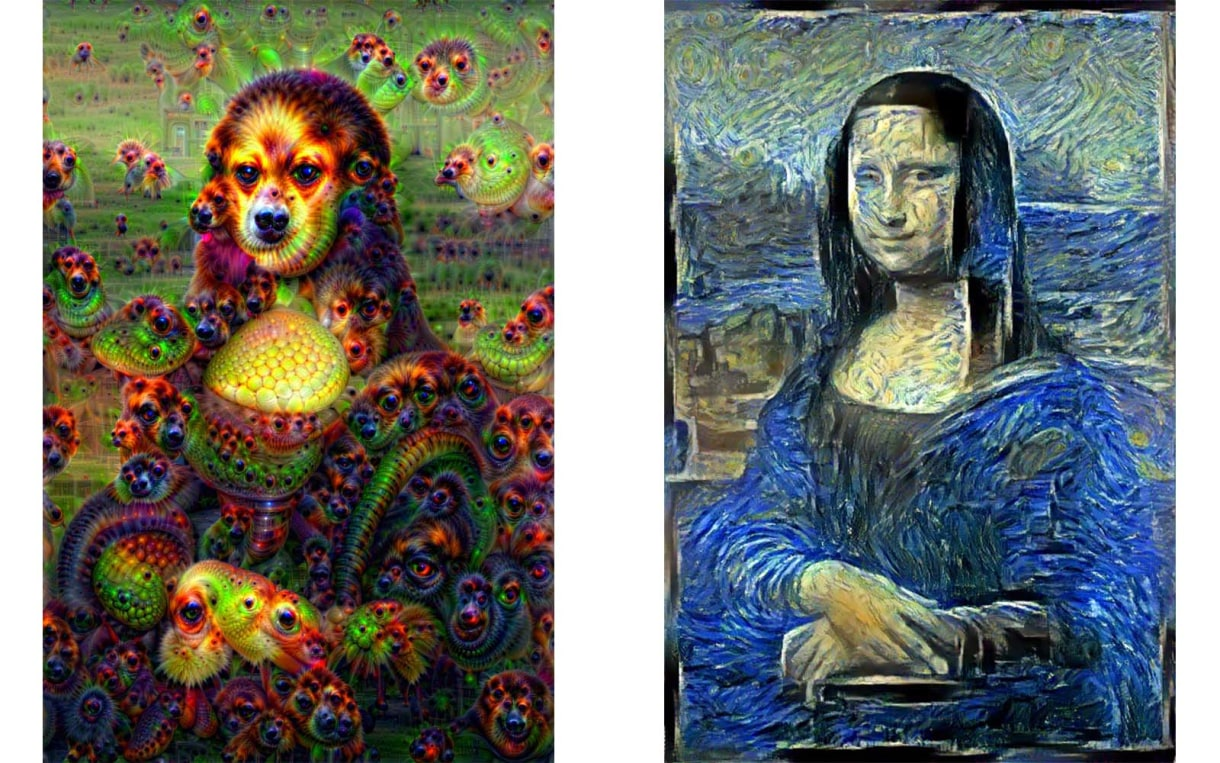
The “Mona Lisa” generated with CNN and NST respectively. Source: https://www.domestika.org/en/blog/10352-what-is-ai-art-a-guide-on-how-it-works-and-how-to-create-it
But this raises an ethical issue: is the stylized image original or is it plagiarizing?
What are the ethical components of AI art?
When generating art with AI, it’s important to take into consideration a few ethical dilemmas. One is that AI art uses other art pieces to learn patterns and generate art. If artists that did not give their consent have their artworks as a part of the study material, then the art generator may be able to replicate and plagiarize the original artist’s style. Without following copyrights or crediting the artist, it is hard to determine whether the user is receiving totally original artwork.
For instance, when photographer Boris Eldagsen received an award for an AI-generated piece titled “The Electrician”, controversy arose when he later declined the award to discuss how AI images and photography are separate entities.

“The Electrician” by Boris Eldagson. Source: https://www.theguardian.com/artanddesign/2023/apr/18/ai-threat-boris-eldagsen-fake-photo-duped-sony-judges-hits-back
Secondly, AI may also invalidate human effort. Human artists take time to complete their artworks--from planning to framing. Each color, each stroke, each action matters in creating their masterpiece, but an art generator crunches out art in a matter of seconds. Not only is it timely, the cost is little to none. With such an alternative available, AI may put professional artists or emerging artists in a difficult spot, especially when there have been precedents of AI art winning over non-AI art in competitions.
Lastly, it also brings into question what the meaning of art is and as to whether AI art can fit underneath that category. Many artists have been vocal on the fact that art is produced with human elements: mood, originality, emotions, ingenuity, inspiration, and so on. Yet, when a machine produces art, it does not have any of its own emotions or motives in the creative decisions of the piece. However, there is still a visual appeal in its pieces.
What does the future have in store for AI generated art?
With its ethical dilemmas, AI art will be challenging many questions in the field of art. New copyright and originality laws will have to be policed. New definitions of art have to be evaluated. But also, AI serves as a new tool for both artists not non-artists alike.
AI art can be seen as a collaboration between artists and machines; artists guide the AI with detailed textual descriptions, and the AI serves as a creative outlet and generates the text. Artists can also use AI art as inspiration for their own pieces. While AI technology is advancing, the pattern recognition software does not fully support replicating the text description in art, often leading to unpredictable outcomes. These unpredictable outcomes may be a source of inspiration and uniqueness, bringing about a new style of art.

“Mutations of Presence” Artist Sougweg Chung in collaboration with computer DOUG. Source: https://www.domestika.org/en/blog/10352-what-is-ai-art-a-guide-on-how-it-works-and-how-to-create-it
AI art can also be accessed by non-artists, allowing even the artistically challenged a try at producing beautiful art. It evens the playing field and gives non-artists an outlet to express themselves artistically regardless of their skills. Though the machine itself may not have emotions, the user does.
In addition, AI art can be used to simplify some jobs. For example, producing a book cover is an arduous back-and-forth with the artist and the author. In addition, the work is the same; the author gives the artist a few prompts to give them an idea of the book, even including a few pictures as a dataset. Not only are the results instantaneous, the price is cheap as well. Art is often expensive for the everyday person, especially a small author, so the cheaper and still visually appealing alternative is a smart financial decision.

AI generated book cover for a mystery book. Source: https://twitter.com/unbounders/status/1467824221648826370?s=20
The advance of artificial intelligence is inevitable, but it is up to us to decide whether we want to challenge the new technology or our current notions of what is art. While some art communities are outright banning the use of AI generated art, museums and auction houses are displaying and selling them. While the discussion is still heated, the possibilities and potential growth of AI art are endless.
References:
https://edition.cnn.com/2022/09/03/tech/ai-art-fair-winner-controversy/index.html
https://culture.org/ai-generated-art-sparks-controversy-in-photography-and-art-competitions/
https://restofworld.org/2022/ai-backlash-anime-artists/
https://nftnow.com/features/the-ai-generated-art-debate-is-here-and-its-very-messy/
https://www.plymouth.ac.uk/discover/is-ai-generated-art-actually-art
https://www.domestika.org/en/blog/10352-what-is-ai-art-a-guide-on-how-it-works-and-how-to-create-it
https://www.makeuseof.com/ai-art-generation-ethical-pros-cons/
https://www.inc.com/inc-masters/three-ethical-concerns-about-ai-generated-art.html
https://www.makeuseof.com/ways-ai-generated-art-changing-future-of-art/
https://www.wired.com/gallery/where-the-ai-art-boom-came-from-and-where-its-going/


 PREVIOUS ARTICLE
PREVIOUS ARTICLE 

